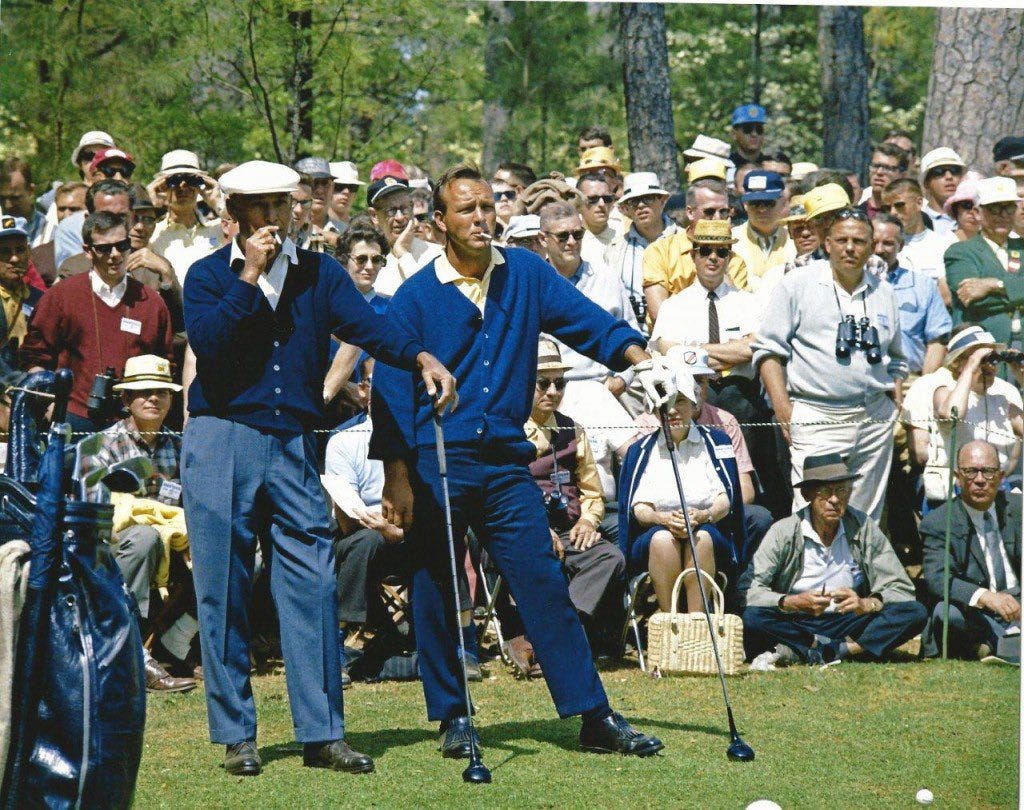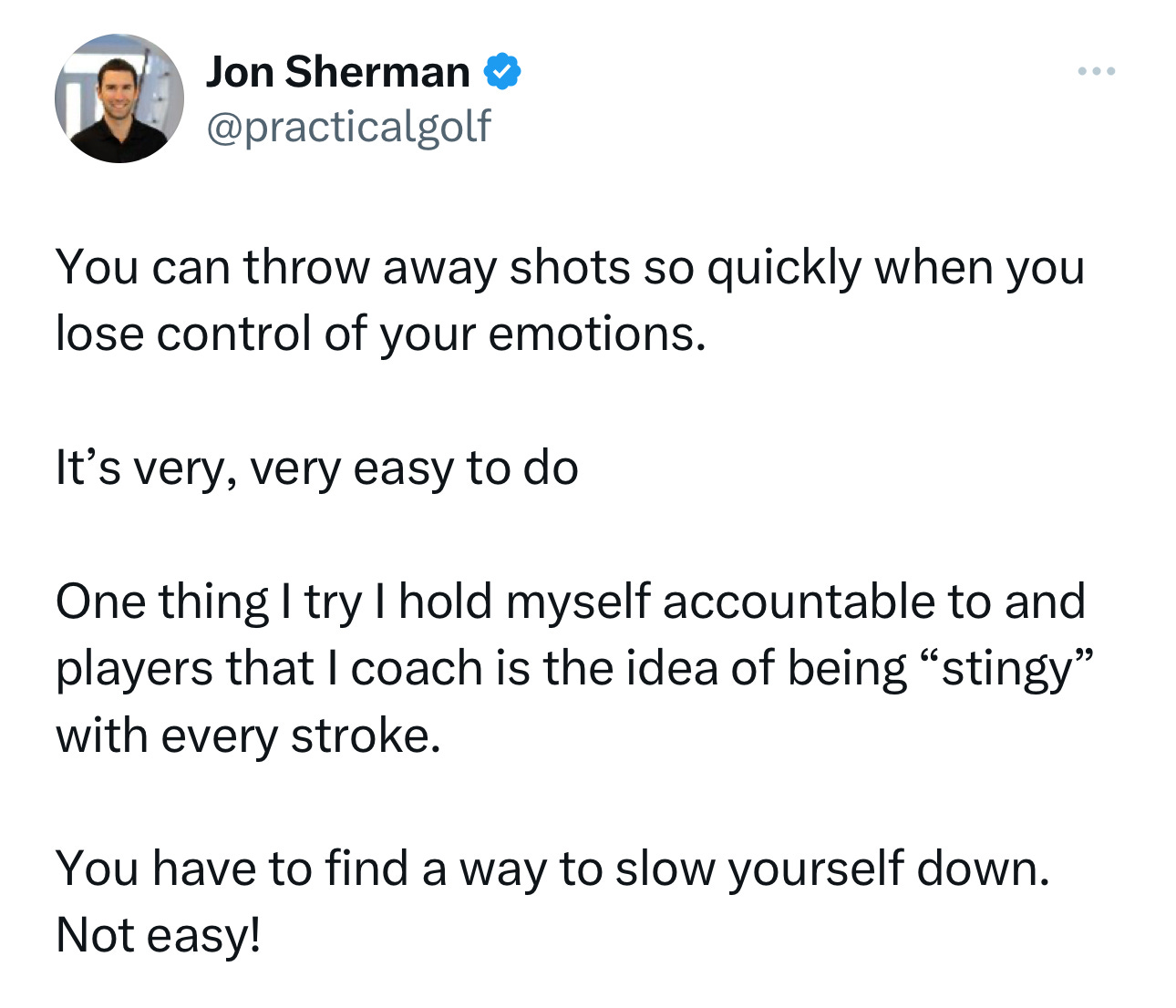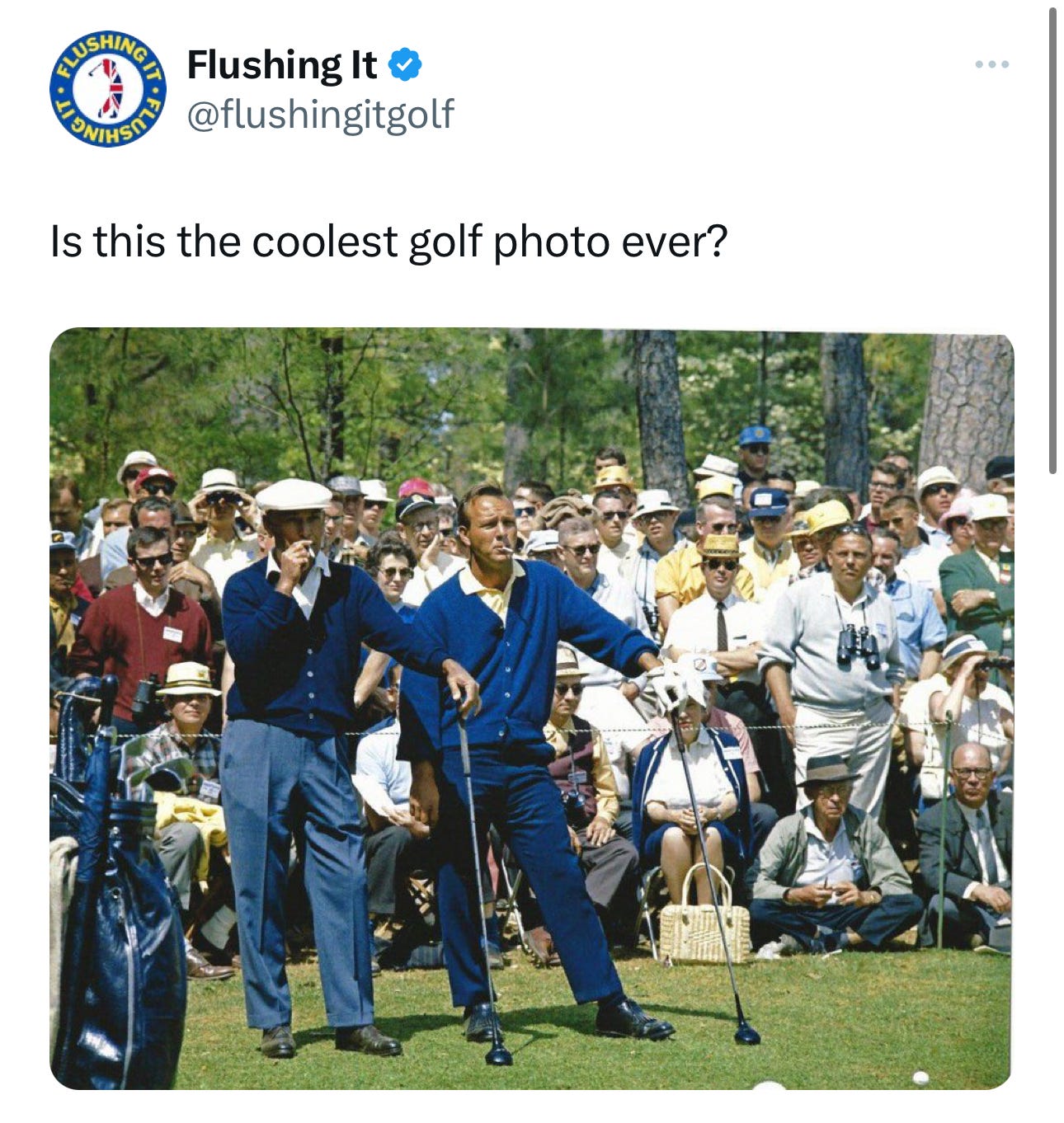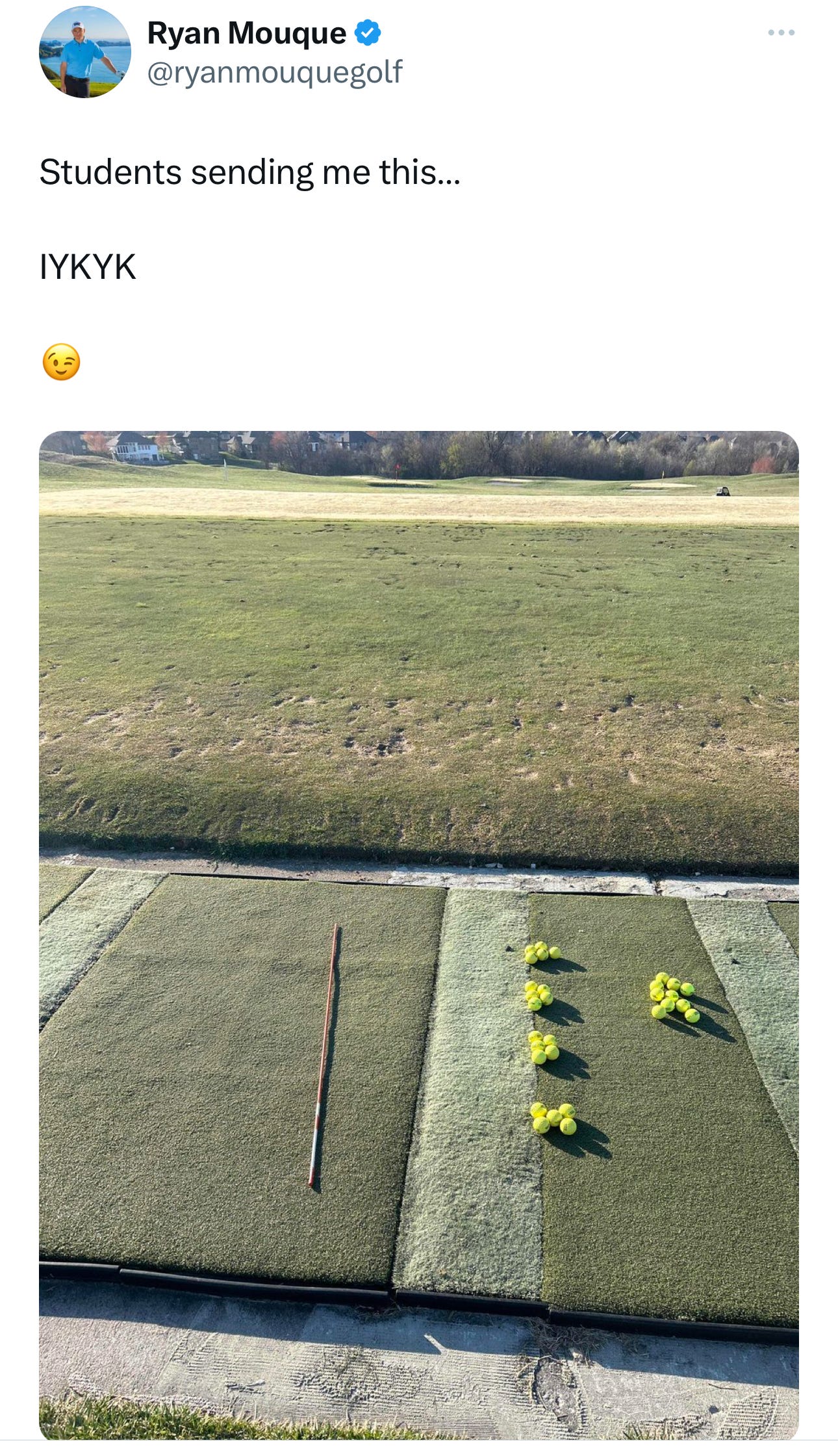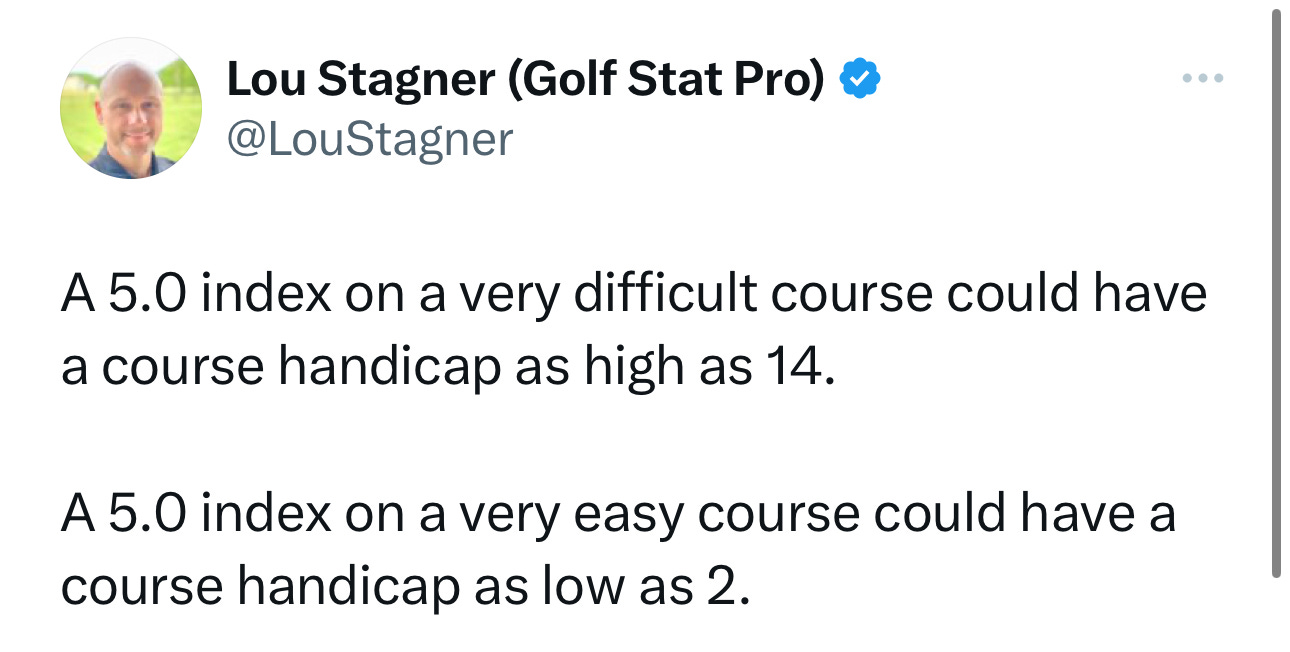The 2nd Cut Newsletter: Edition #41
Controlling Your Emotions, Practice Set Up, Rock the Baby, Moe Norman’s Swing, Short Game Chef and More
“He woke up every morning knowing he was going to hit the ball straight.” - Tiger Woods talking about Moe Norman
📰 Edition #41 📰
Welcome back to The 2nd Cut Newsletter!
ICYMI, check out last week’s Deep Dive: The Best of March
📫 In today’s Newsletter: Controlling Your Emotions, Practice Set Up, Rock the Baby, Moe Norman’s Swing, Short Game Chef and More
If you’re new here, this newsletter is designed to provide valuable insights, tips, and ideas from around the internet to improve your golf game.
What you get:
1 - Newsletter every Wednesday
1 - Deep dive every Friday
Sign up below for free to receive the weekly newsletter and deep dive into your email inbox.
Controlling Your Emotions
Jon Sherman’s tweet is dead on. Losing control of our emotions adds strokes to the card. We all know it’s true, yet we still do it.
In Edition #26, we talked about Novak Djokovic and his Mental strength:
“You have your doubts and fears. I feel it every single match. I don’t like this kind of mindset I see alot in sports, like, just think positive thoughts, be optimistic, there’s no room for failure, there’s no room for doubts. It’s impossible. You are a human being.”
Djokovic says the key is to limit how long these emotions affect you, not what many people instinctually try to do, which is avoid the emotions or shield any doubts. He says he acknowledges the feeling, reacts, maybe even yells, and then bounces back quickly.
So, as golfers, what can we learn from this elite athlete? One thing is to stop trying to avoid negative thoughts or emotions. We are human and they will happen during a round. The key is to let these emotions in, acknowledge them, react, and then let them go and move on.
Of course, this is easier said than done. But we can get better at the mental game by having the right expectations, accepting that we will have bad shots and breaks, and even possibly using conscious breathing, as Djokovic mentioned.
In an old post called “The Next Shot,” Tiger Woods explains to his son Charlie how to approach the game:
“I don't care how mad you get. Your head could blow off for all I care, just as long as you're 100 percent committed to the next shot."
-Tiger Woods to his son Charlie
There is a phenomenon called the Sunk Cost Fallacy that is frequently cited in economics and business. According to the Oxford Dictionary, the Sunk Cost Fallacy is “the phenomenon whereby a person is reluctant to abandon a strategy or course of action because they have invested heavily in it, even when it is clear that abandonment would be more beneficial.”
For our purposes, I like Wikipedia’s definition of a sunk cost: “A sunk cost is a sum paid in the past that is no longer relevant to decisions about the future.”
This is what Tiger is trying to tell his son Charlie.
TLDR: Whatever you did on the last shot is irrelevant to the next shot. Focus on the current situation and make the best decision going forward.
It’s okay to get mad, but you must let it go before the next shot. This is something that needs to be practiced. But over time, if you make a conscious effort, you will get better at it and, in turn, reduce strokes.
🐦 Tweets of the Week 🐦
Yes.
Ryan Mouque tweeted this recently, and it is a perfect illustration of how you should set up your range sessions.
Simple:
an alignment stick
small preset groupings of your range balls
This gives you structure and forces you to pace yourself and be purposeful.
It’s a short clip, but I really liked this swing thought from the bunker. “Rock the baby.” Click the tweet to see Tony’s bunker lesson.
📺 💻 T2C Media 📺 💻
Another LKD swing breakdown. Tiger Woods said only two players have ever "truly owned their swings": Ben Hogan and Moe Norman. Above is an 8-minute swing analysis of Moe Norman, who some call the straightest hitter of all time.
I loved this video. Short Game Chef, aka Parker McLachlin, works with ForePlay pod member Dan Rapaport on his short game. It’s about 30 minutes long and very detailed, covering chipping, pitching, and bunker play.
Park talks to Dan about using the body more than the arms, multiple ways to create and reduce speed, and how being shallow can increase the margin of error on your chipping method. I also love his concept of having a base “vanilla chip” to build off of.
From bunkers, he shows Dan how to hit high, soft bunker shots and then how to hit longer ones off tight lies. There is a lot to learn in this one.
I HIGHLY recommend watching this if you need help with chipping.
🔢 Stat of the Week 🔢
Your index does not = your course handicap!
Thank you for reading and subscribing. If you found this post helpful, please share it with a fellow golfer!
Til next time.






